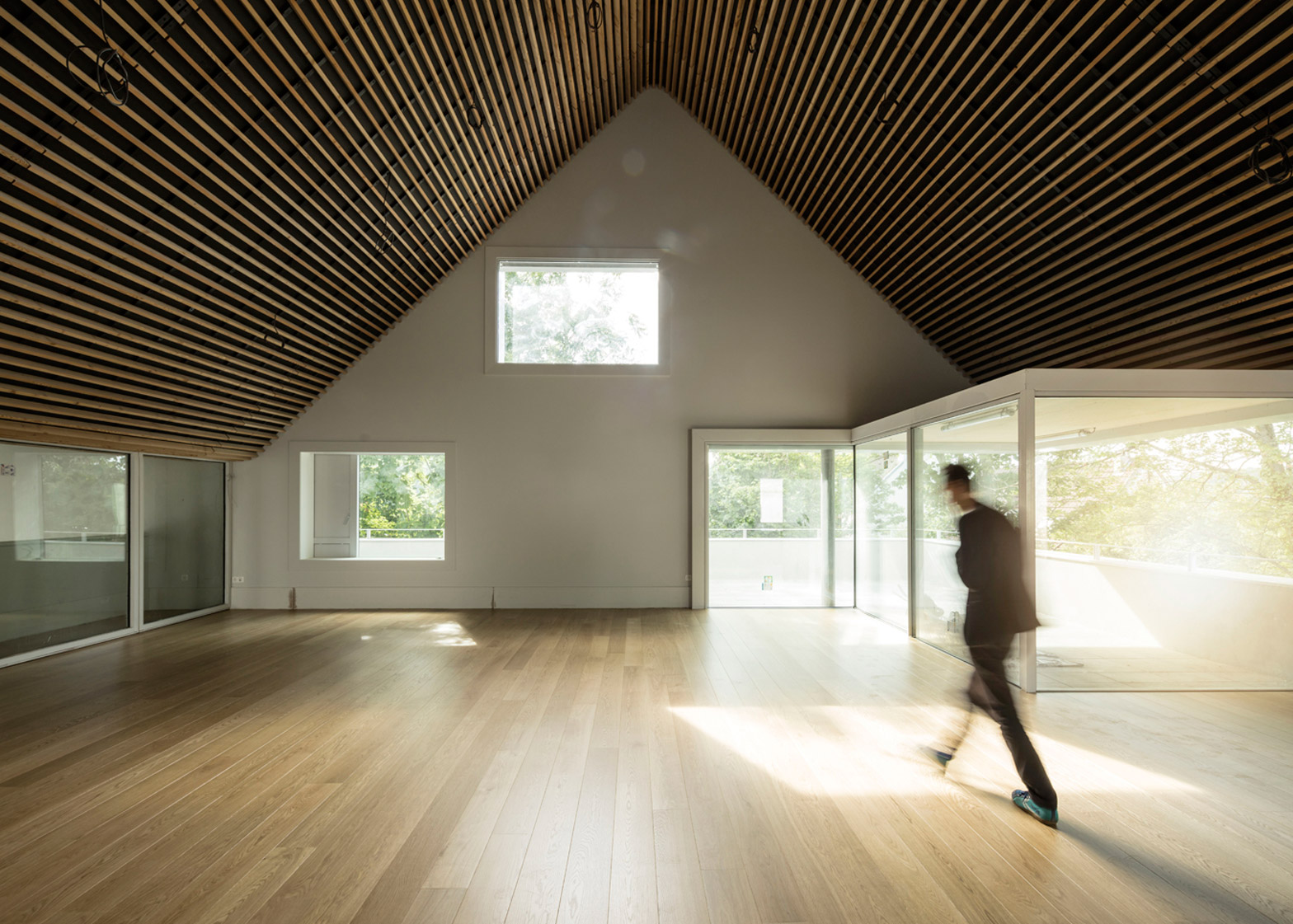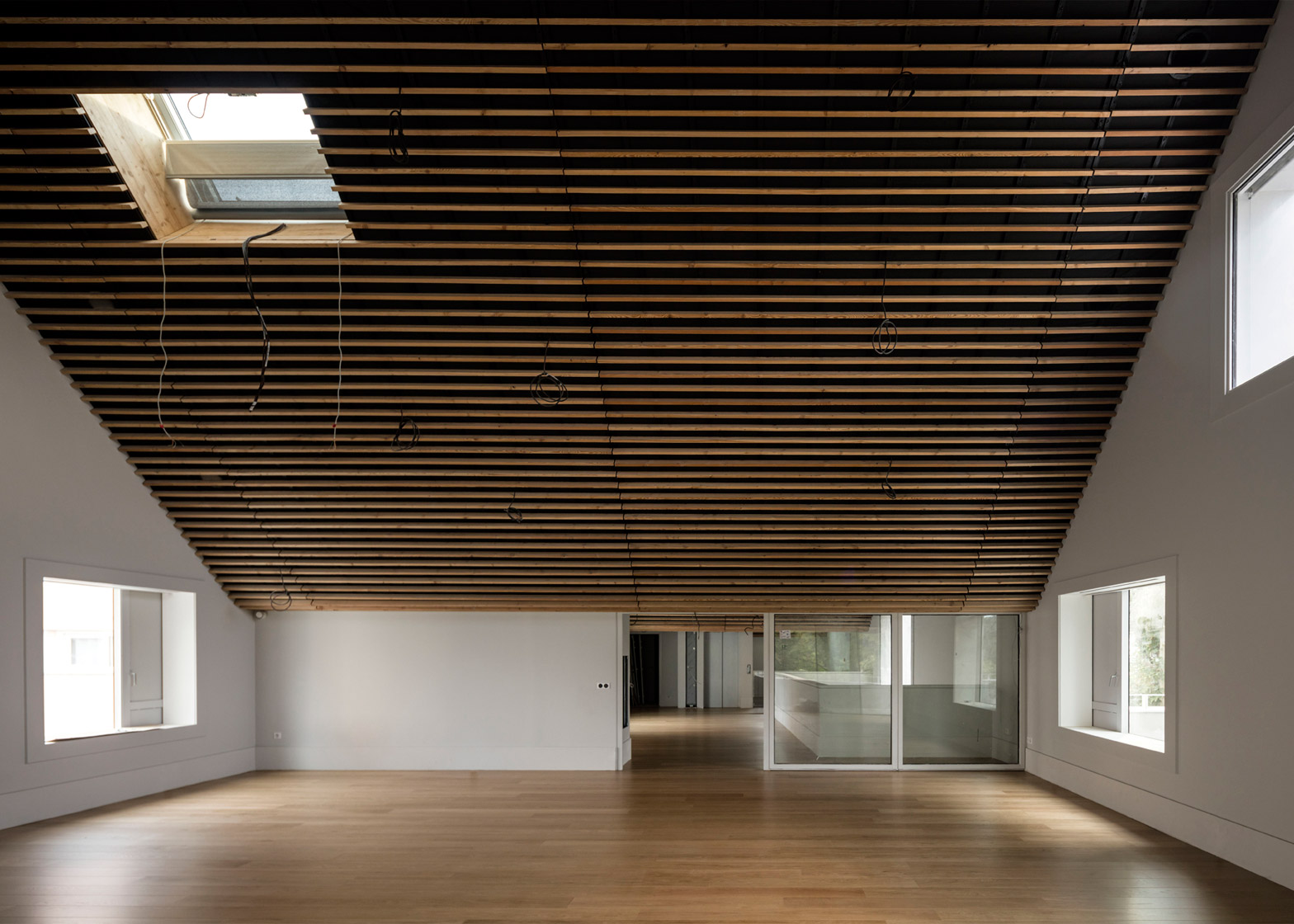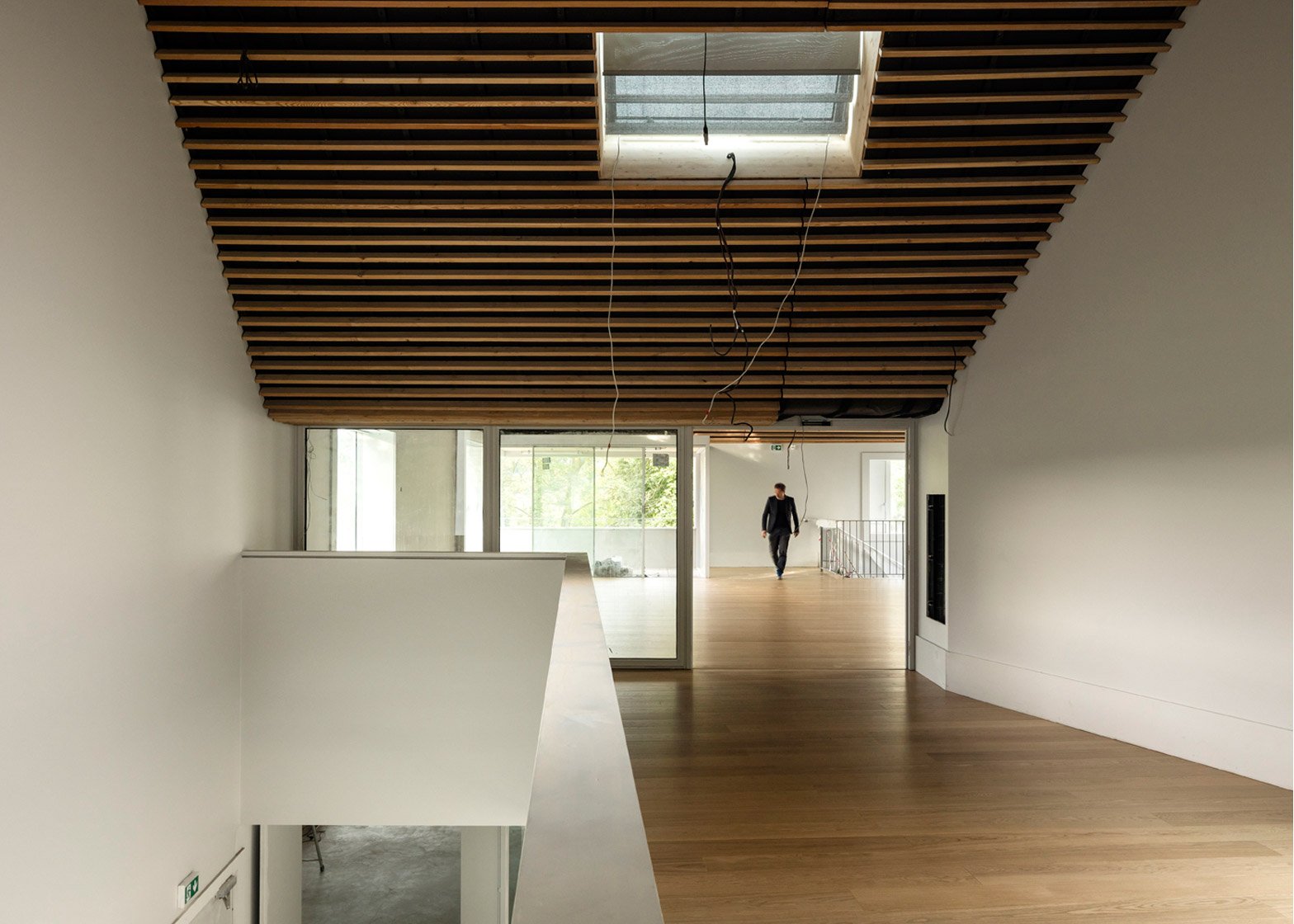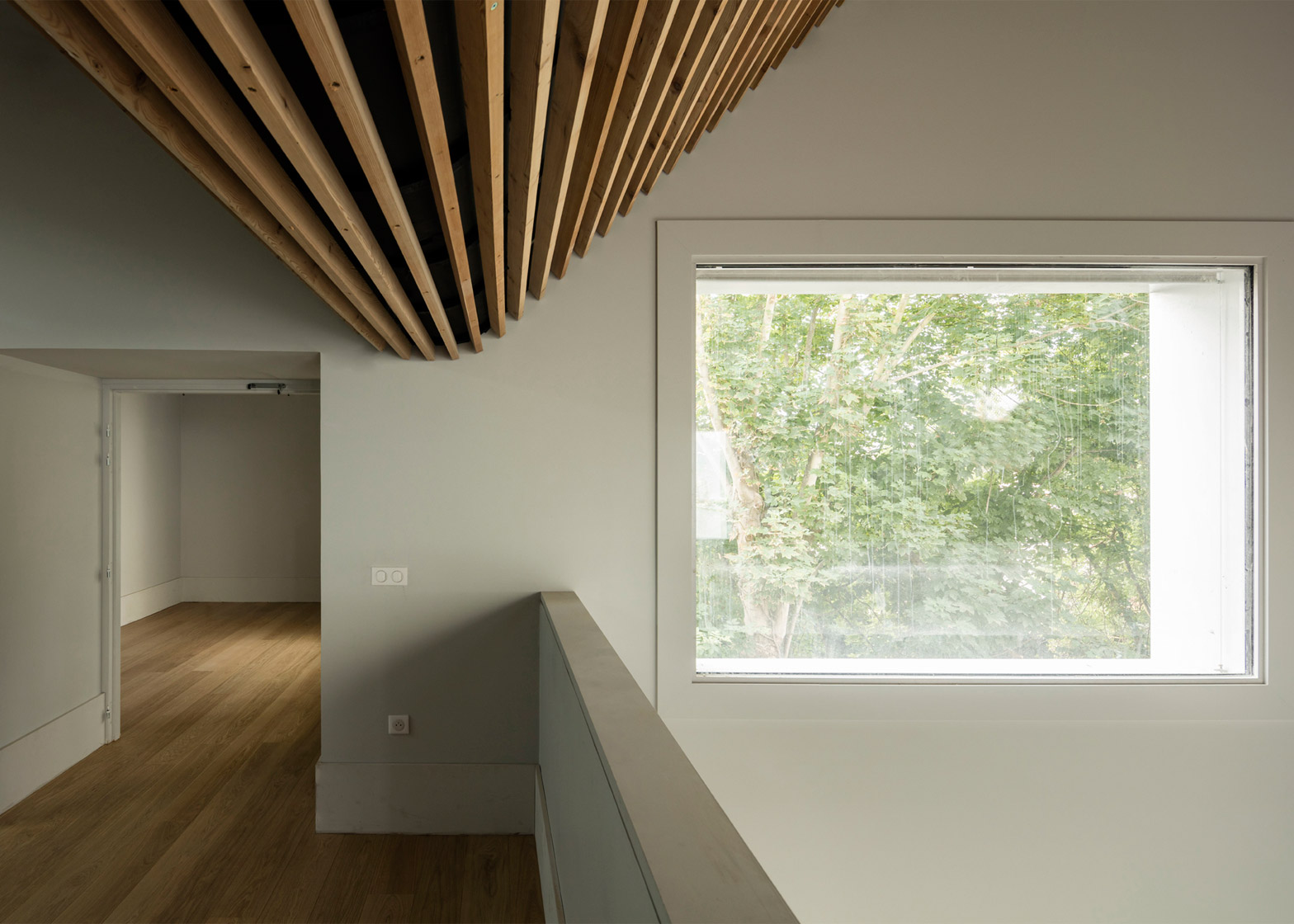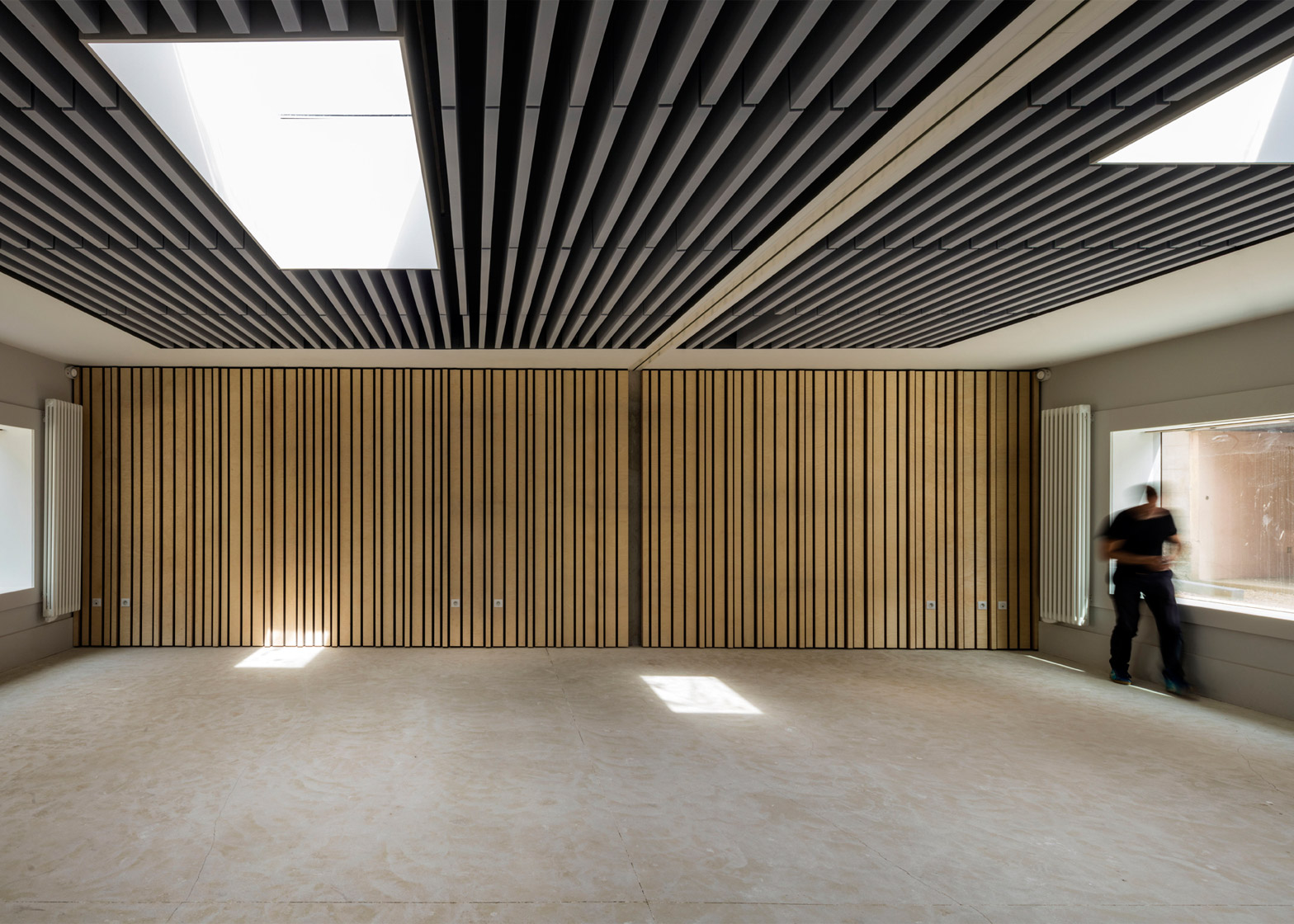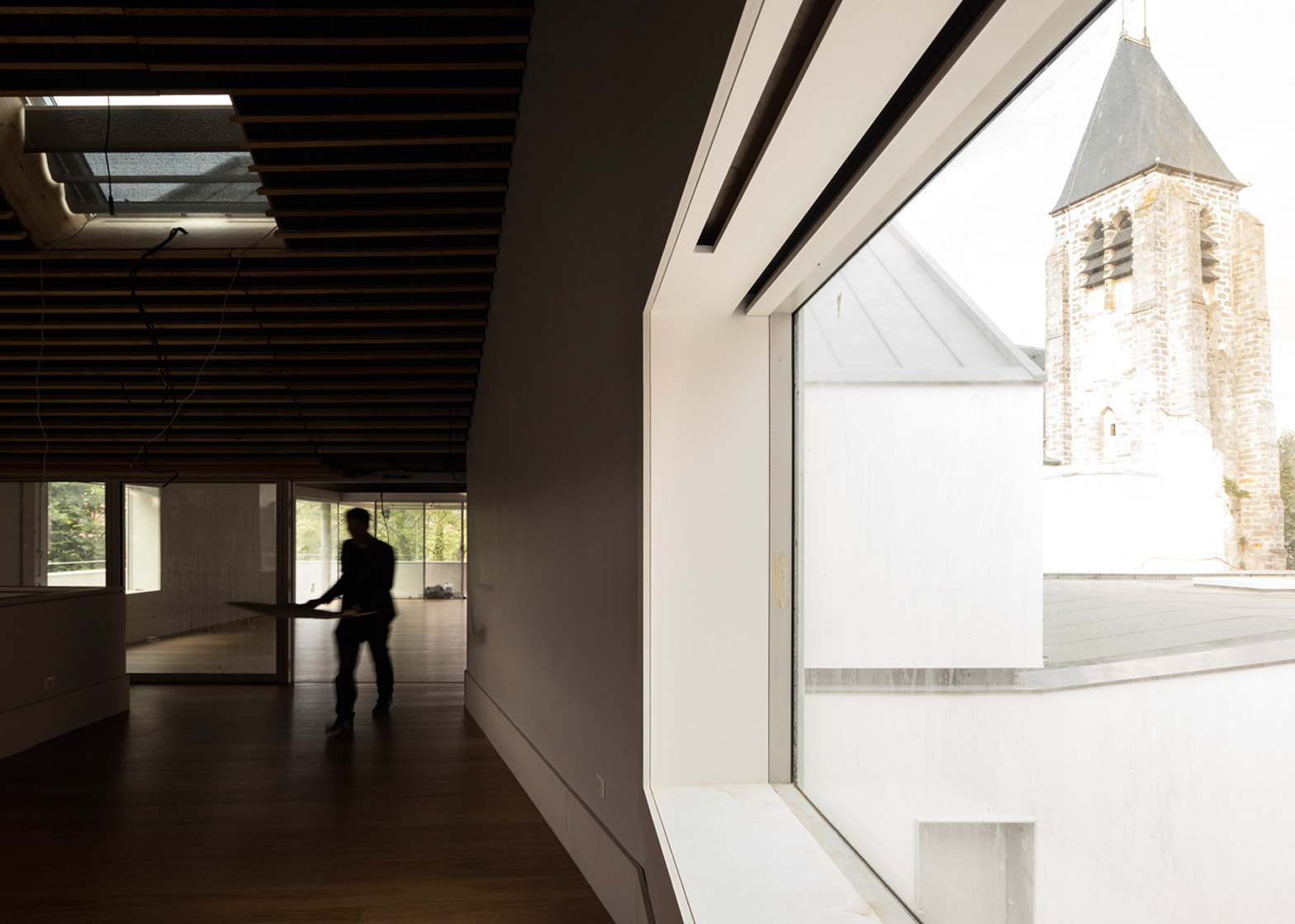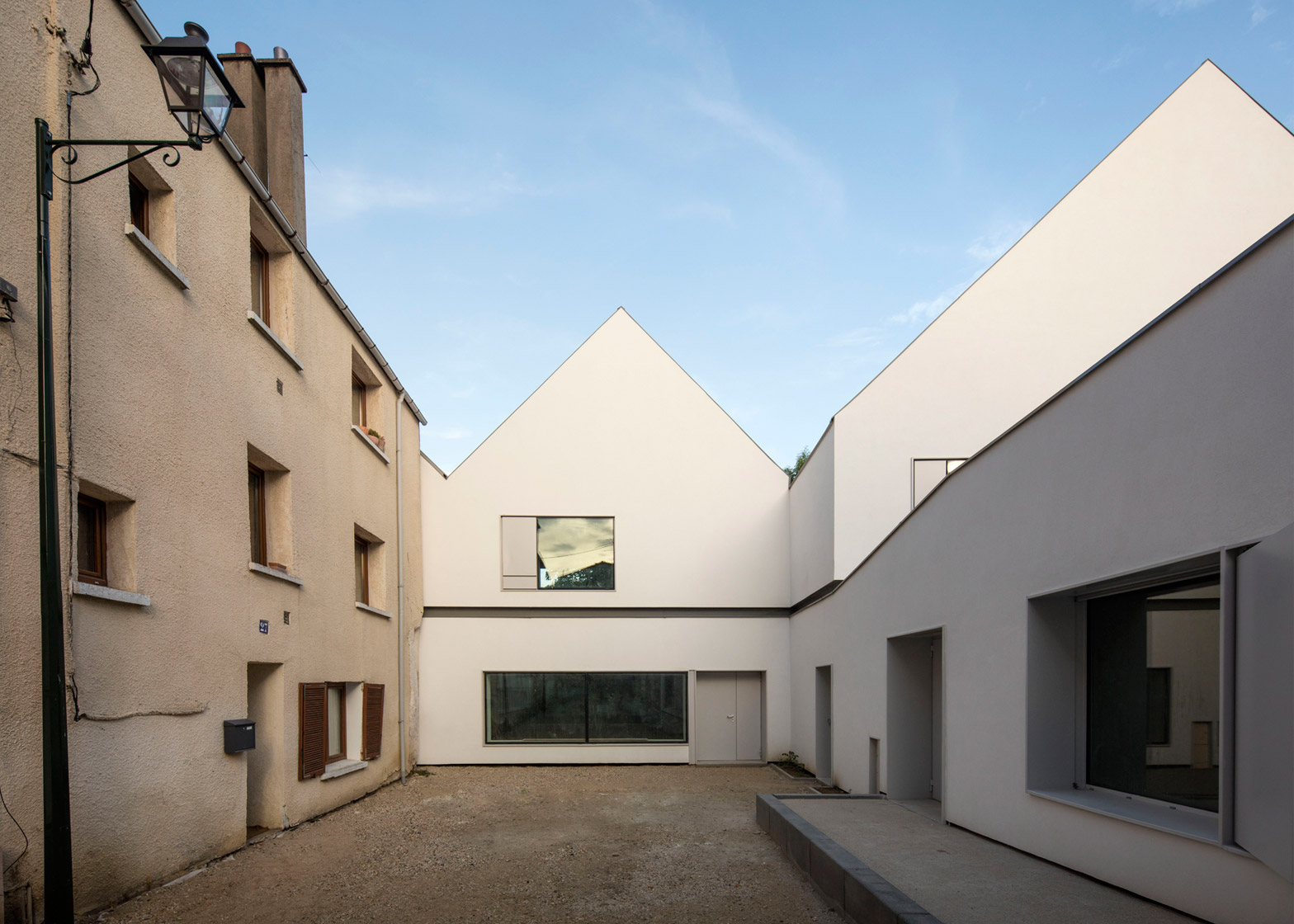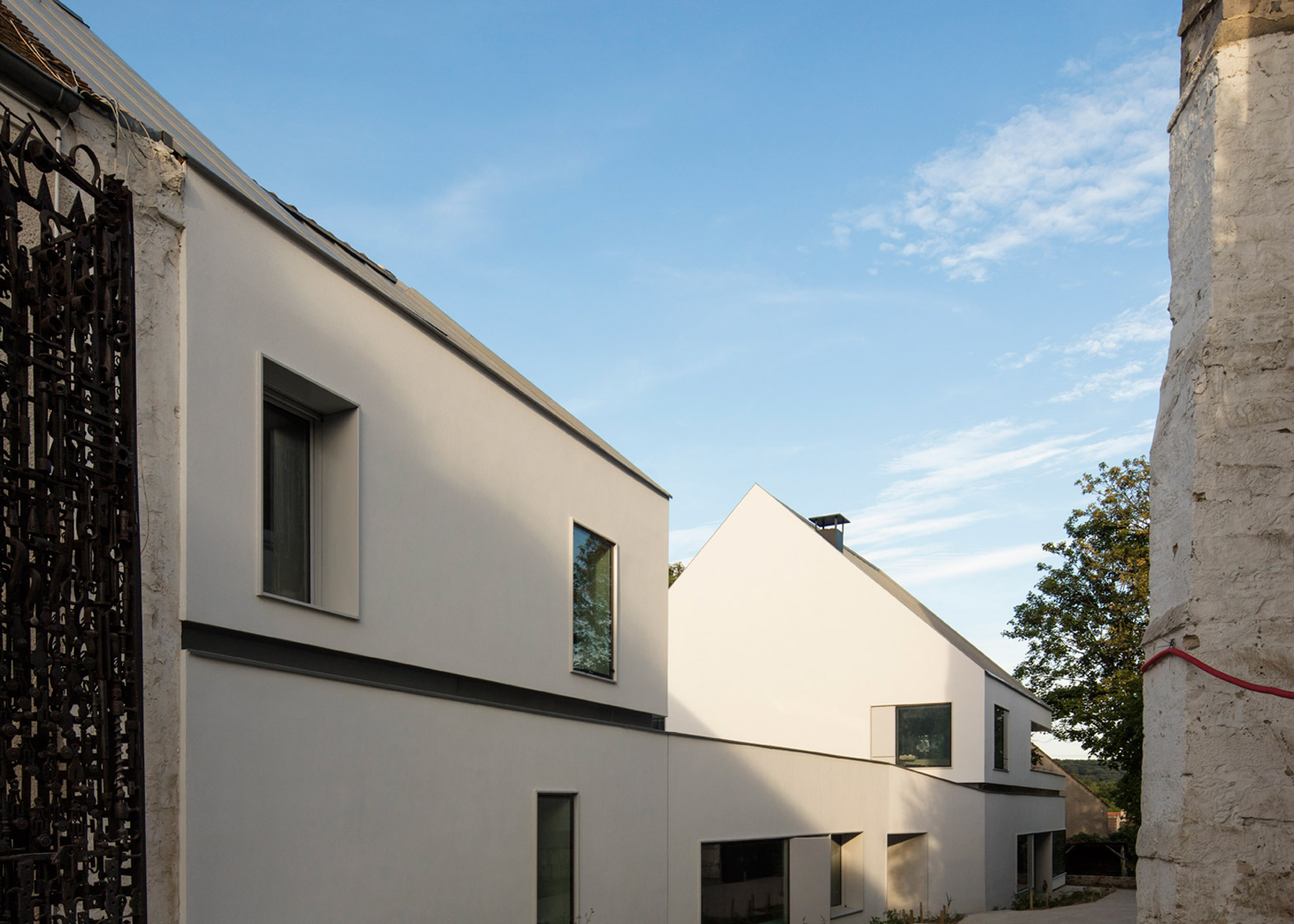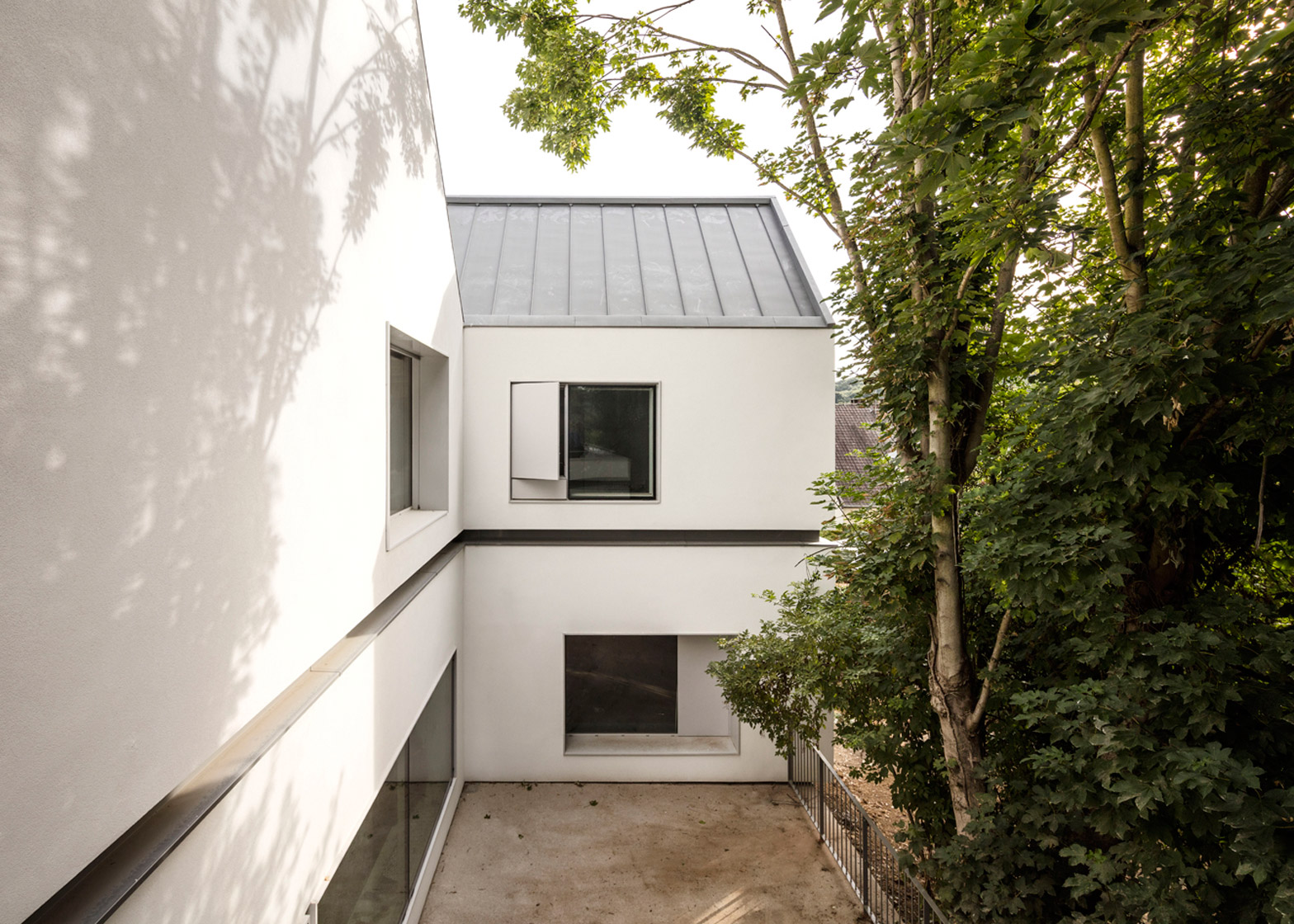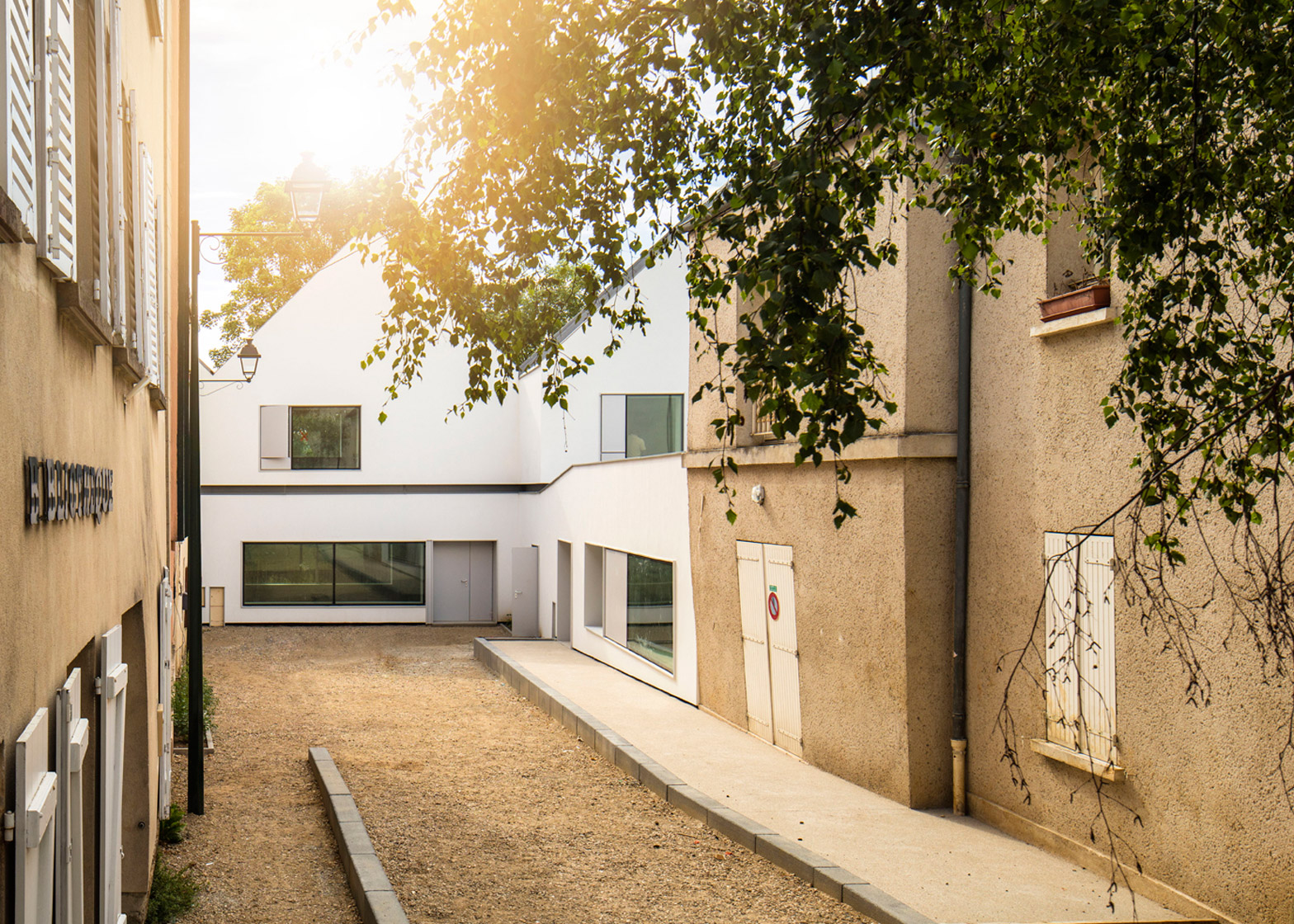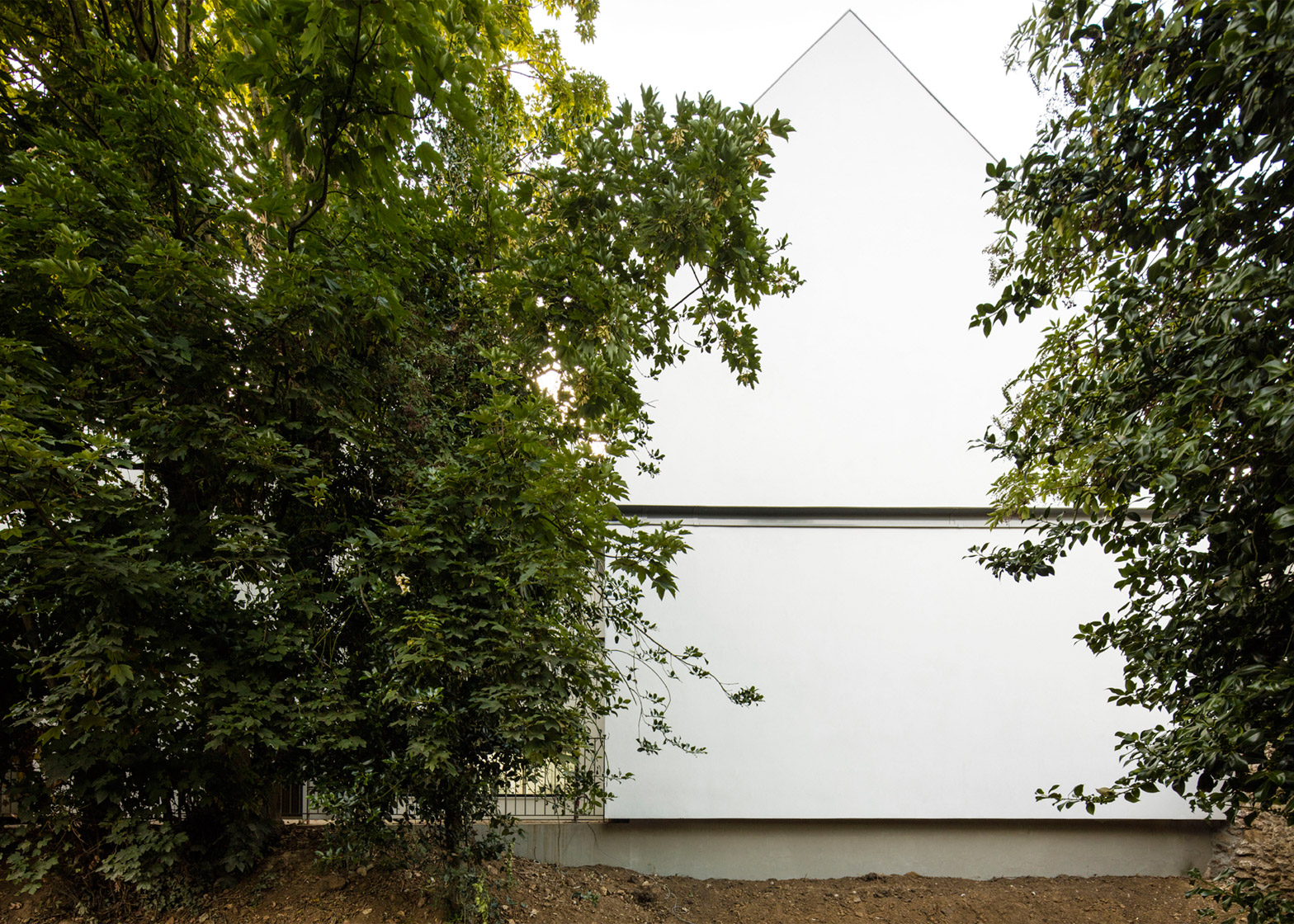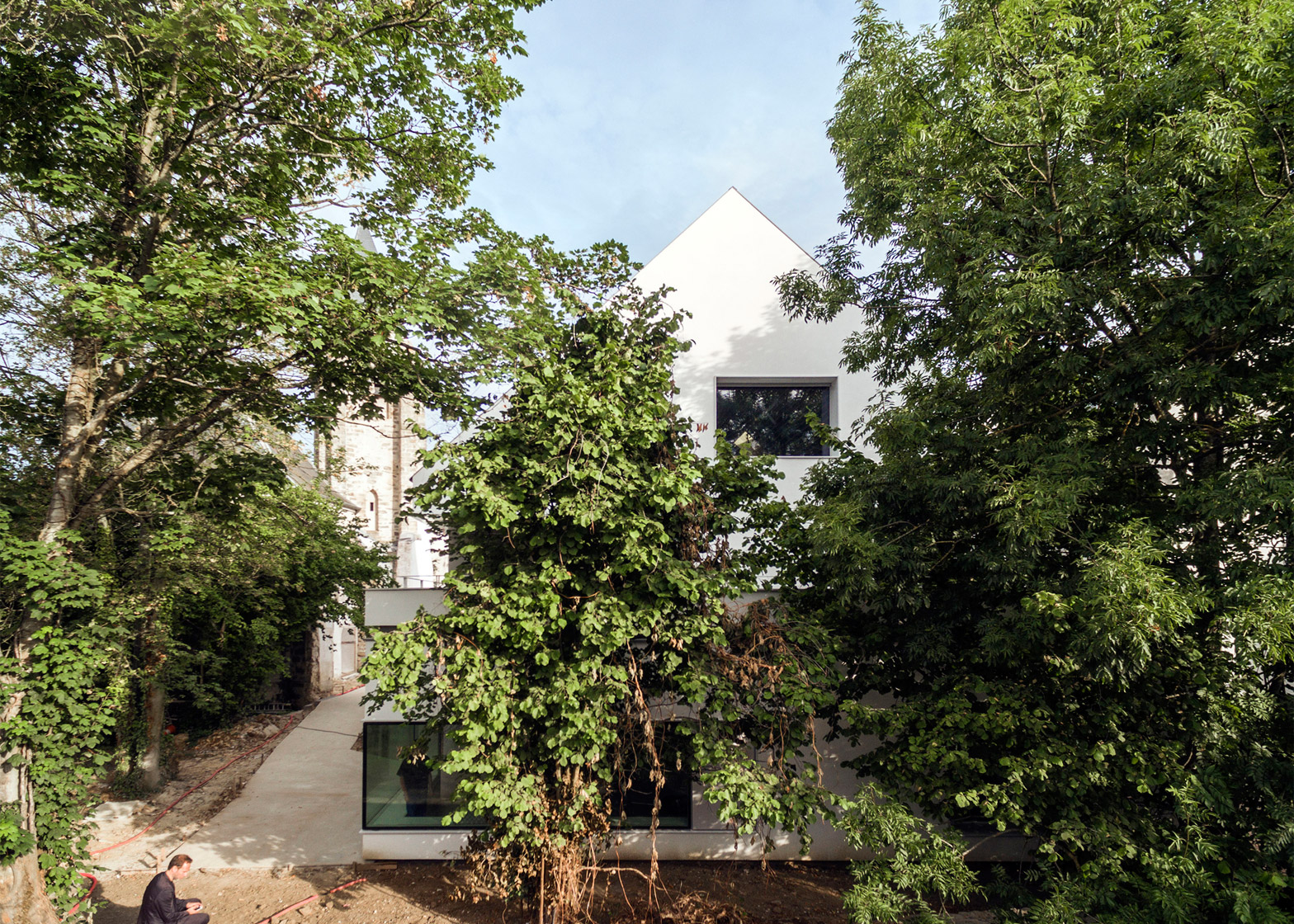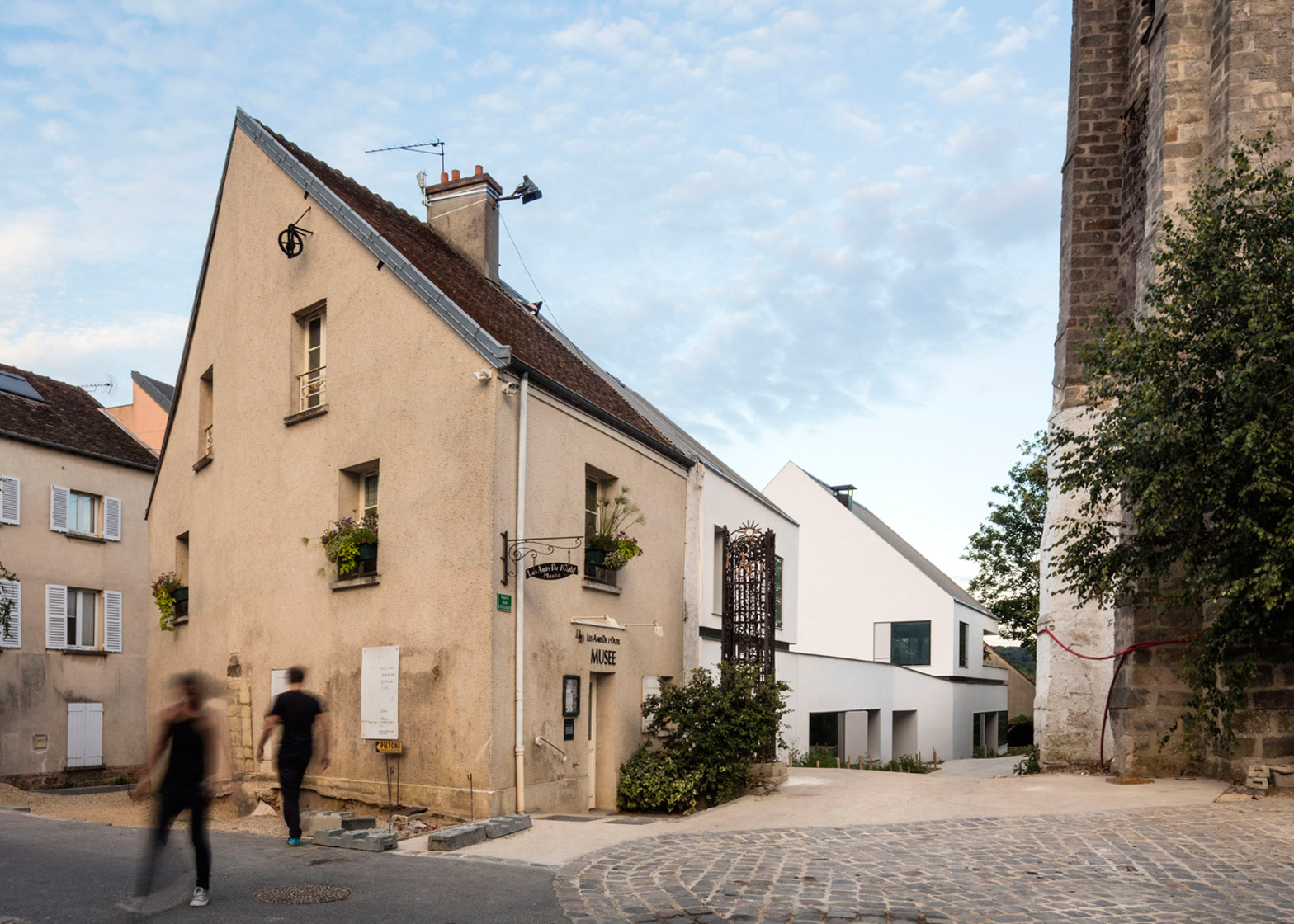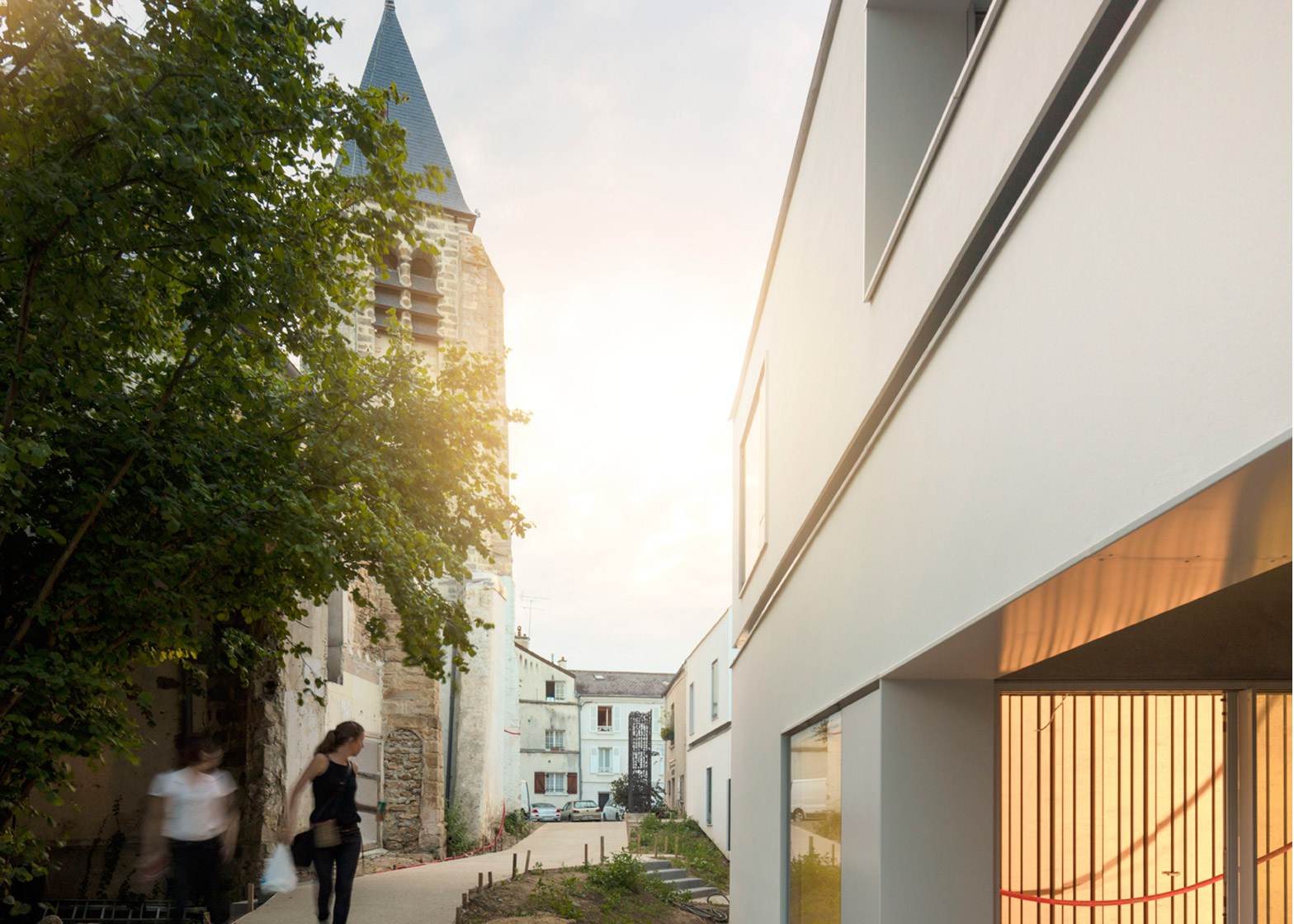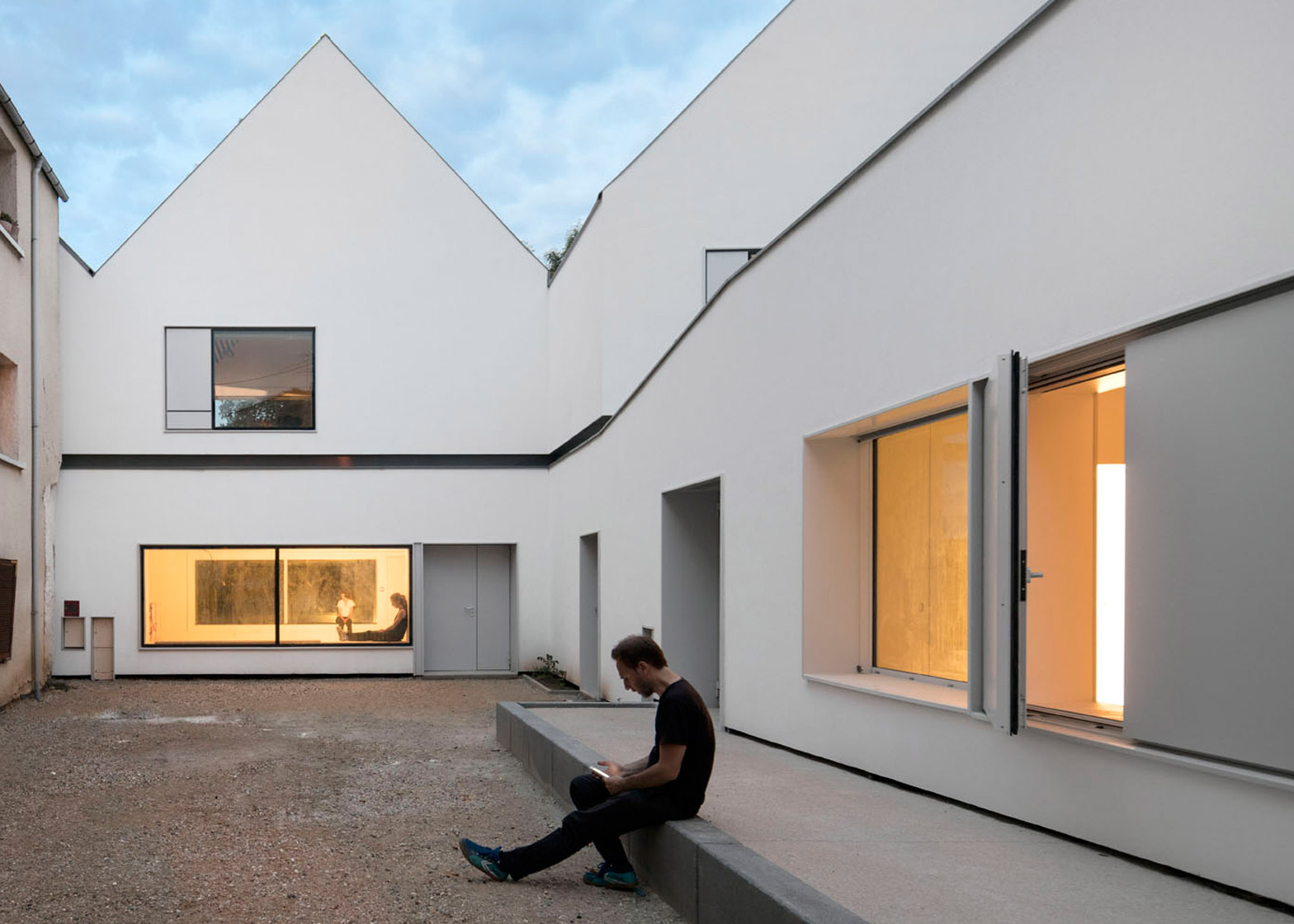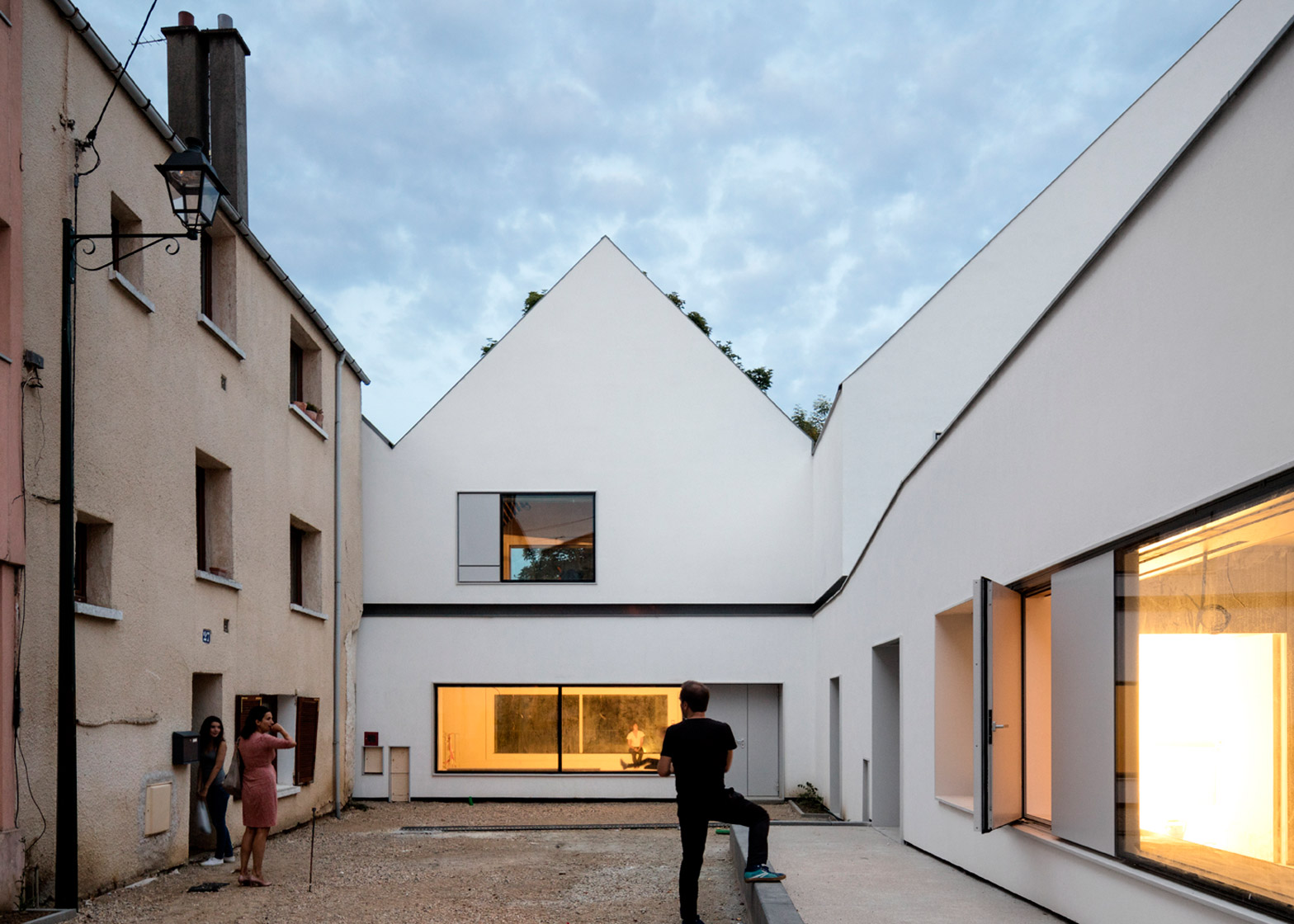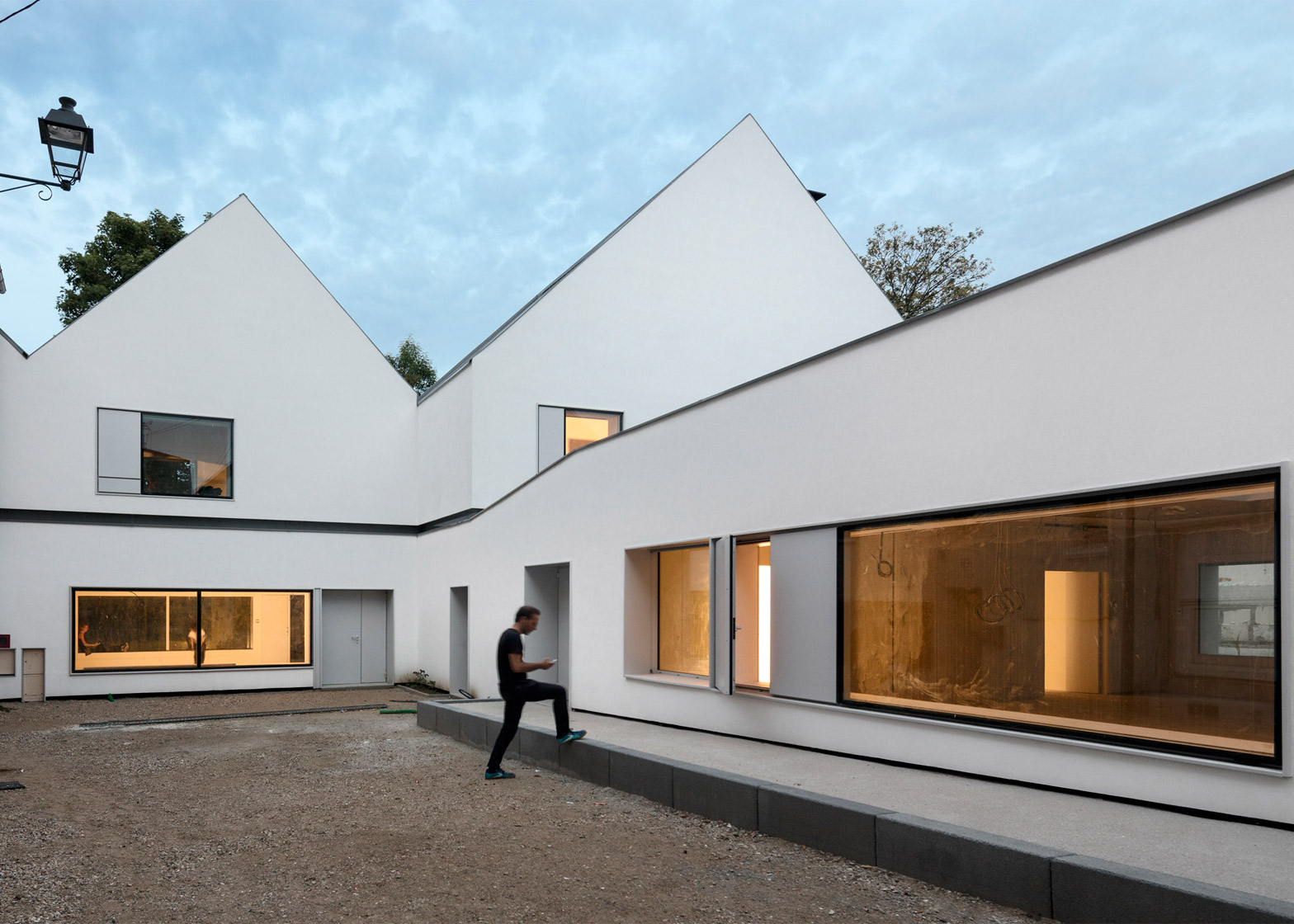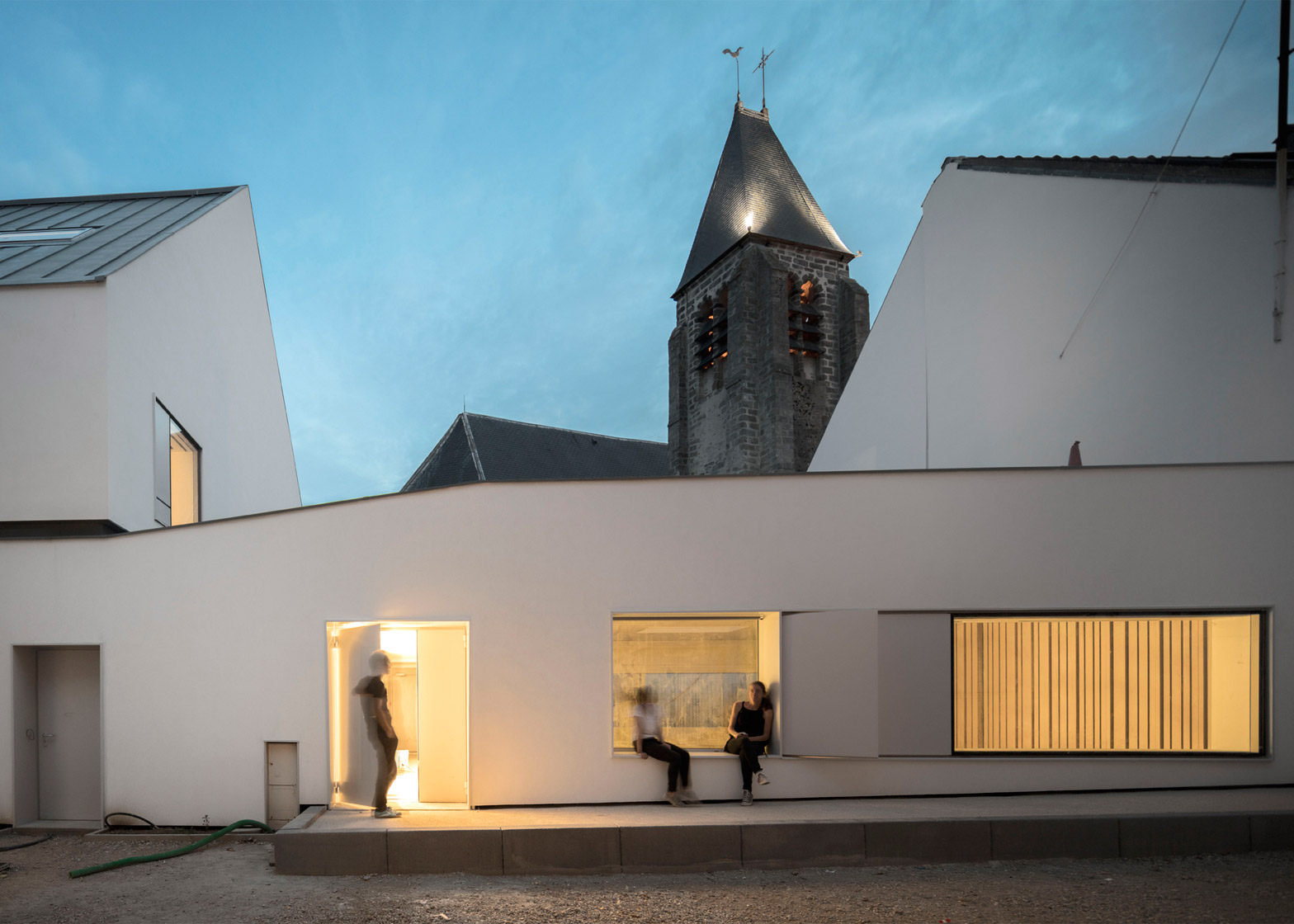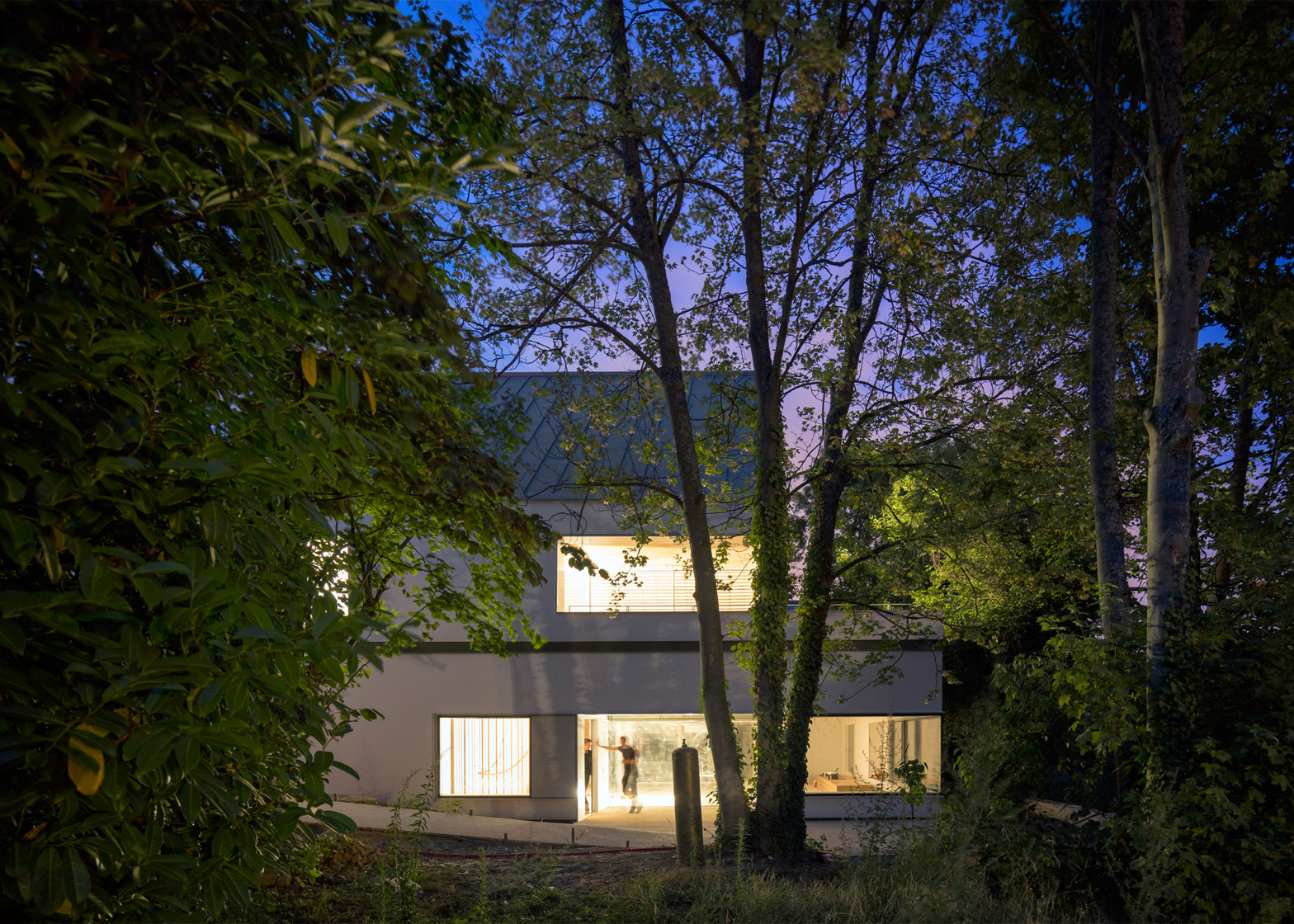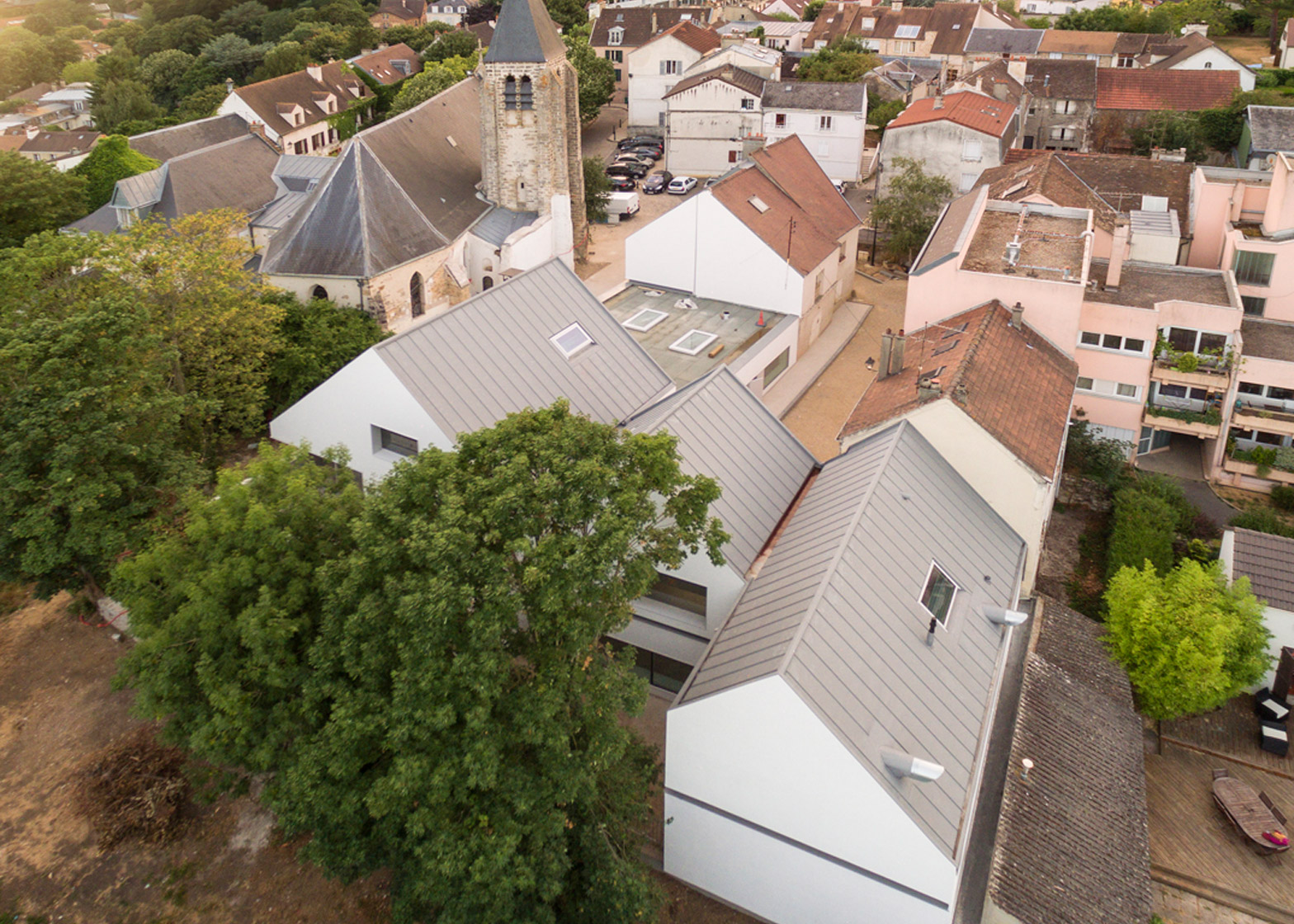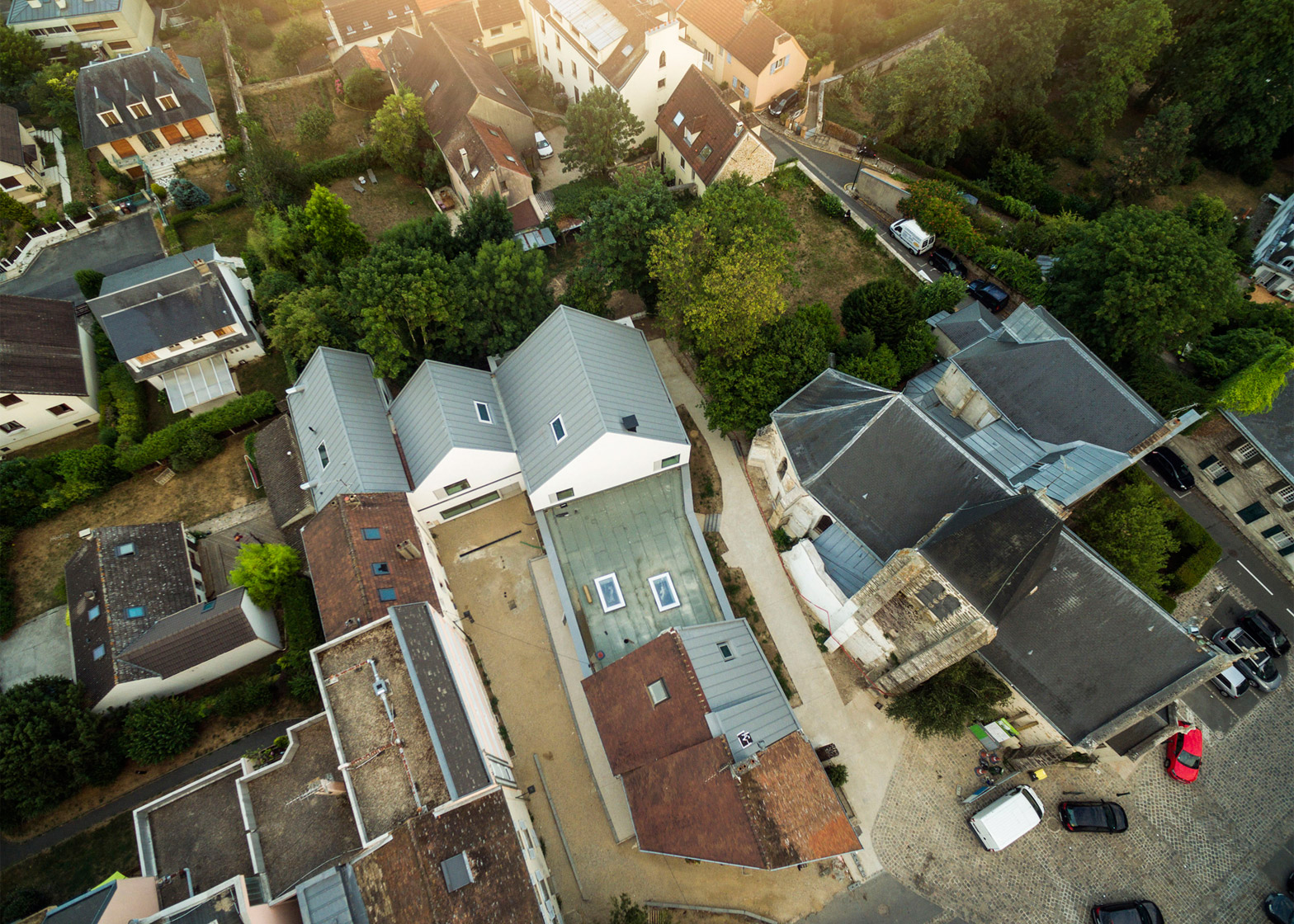Paris studio Marchi Architectes has extended a small museum in the French village of Biévres and added a community centre with a series of pitched roofs (+ slideshow).
The project, overseen by the municipality of Biévres, is called Elderly Hall. It was completed by architects Adélaïde and Nicola Marchi, whose previous buildings include a home for a pair of art collectors featuring a recessed courtyard, and a blackened timber house extension in a forest.
The architects chose to reference both the existing museum building and house styles typical throughout the village in the new additions, but added modern details and materials.
"The attitude of the project is to integrate and transform the traditional typologies of a French village in a contemporary way," architect Nicola Marchi told Dezeen. "We used windows with wide proportions and new technologies, as well as volumes with pitched roofs to compose unusual assembly and details."
Built next to a church, the structure includes an addition to the existing Musée de l'outil – a museum dedicated to traditional trades, with collections of old tools. It also incorporates spaces for elderly residents to meet and socialise, as well as a multipurpose room for hosting events, exhibitions, and children's activities.
An existing structure on one side of the church was removed to make space for the extension and to open up a path between the church and museum that also offers a direct view towards the valley of the Bièvre River.
A section added to the existing fabric of the museum extends its pitched roof and the alignment of windows. But the white rendered exterior and grey zinc roof clearly distinguish the old and new structures.
The architects had originally specified a local stone for the buildings' cladding but the mayor instead requested white surfaces that match residential buildings in the village.
The roof's tone recalls the slate tiles of the adjacent church, while its flush edges and minimal profile create a modern aesthetic.
Next to the museum, a single-storey structure contains two multipurpose rooms for use by the church. The rooms can be opened up to form a single large space if required and are intended mainly for children's activities.
A row of pitched-roof structures at the far end of the plot accommodate facilities for the village's elderly residents, including a cafeteria and meeting room.
The spaces feature long windows and doors that open onto a courtyard flanked on one side by existing buildings. The eastern facade incorporates further windows that look out onto a garden and towards the valley beyond.
Simple white surfaces inside help focus attention on views through the carefully placed windows. Timber battens covering the ceilings also help to improve the acoustics in the larger rooms.
Photography is by Fernando Guerra.

